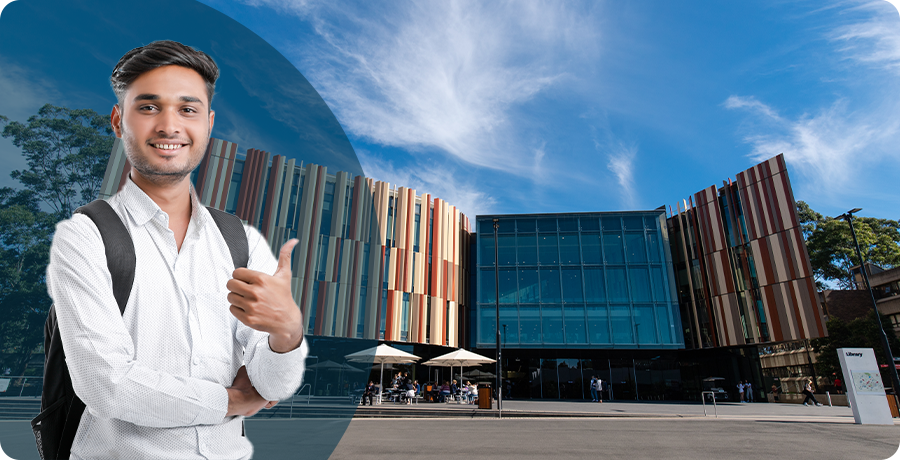Australia has become the 4th largest destination for Indian students seeking higher education abroad. According to the data from the Australian government, India is the second largest source country of international students. The welcoming environment, world-class, affordable education, lifestyle, post-study work visa, and high-quality lifestyle have increased Indian students to 1,00,009 in 2022.
When planning to study in Australia, it's essential to understand the different intakes and seasons, as they can significantly impact your academic journey. In this blog, we'll explore the different types of intakes and seasons that are the best time to start your career journey in Australia.
Intakes and Seasons
The Australian Government offers 2 significant intakes. Some universities also offer a third intake. The intakes are also referred to as semesters and trimesters.
February Intake
This is also known as primary intake, and a large number of students apply for it, resulting in huge competition. During the February intake, funding will be available, including scholarships, research assistantships, and on-campus jobs.
Duration
The course starts in late February or early March. This duration varies with different universities.
The Process
- Research the career options - Look for Australian colleges and programs offering a February intake. Seek out courses that complement your hobbies and professional objectives.
- Requirements for admission - Before applying, carefully check the entrance requirements, as each university may have different requirements. Academic transcripts, results from English language proficiency exams (like the TOEFL or IELTS), and any other paperwork needed must be submitted in this manner.
- Scholarships - Consider monetary factors like living costs, tuition, and any available grants or scholarships. Examine your alternatives for funding, such as external groups or government programs that provide financial aid to overseas students.
- Visa process - Once you receive the acceptance offer, use the Department of Home Affairs website in Australia to apply for a student visa. Ensure that you fulfill all visa requirements, including health insurance.
Benefits
- Earlier Graduation – In February, you complete your graduation earlier than those who join mid-year.
- Align with Southern Hemispheric calendar – The February to November schedule aligns with the business and industry cycles in the region, making it easier for students to integrate into the job market.
- More time for post-study work – by completing your graduation early, you can utilize the time in post-study work.
- Courses availability - Some popular programs and institutions may have limited spaces, and joining the February intake can give you a competitive edge in securing a spot in your desired course.
The February intake can ensure a smooth transition of the course. It's important to note that the benefits of the February intake might vary depending on your circumstances and the specific program or institution you choose.
July Intake
The July intake is the most well-liked among Indian students to study in Australia since it allows them ample time to organize their application materials, gather recommendation letters, construct a CV or resume, and pick up their university mark sheets.
Even if there are more courses available in Australia during the February intake, the July intake can still be beneficial for those reasons.
Duration
The course starts in June and varies with different universities.
Benefits
- Additional time for preparation - The July intake allows students more time for preparation, including completing standardized tests, gathering documentation, and applying for visas. This extra time would be useful for those who want to meet the admission requirements.
- Course options - For the July intake, several programs and institutions might provide a more comprehensive selection of courses and specializations. This might be helpful if you have specific career or academic goals that coincide with programs beginning in the second semester.
- Building networks – This is valuable for building a diverse professional network, sharing experiences, and collaborating on academic projects.
- Avoid the Rush - Choosing the July intake might mean facing less competition for admissions than the February intake, potentially increasing your chances of securing a spot in your preferred program.
- Post-study work opportunities - Completing your degree in November may still provide sufficient time to take advantage of Australia's post-study work opportunities, allowing you to gain valuable work experience after graduation.
November Intake
To study in Australia, November is the least popular intake. Most of the courses offered by the few universities during this intake are vocational. The deadlines for this intake vary depending on the university and the kind of course (undergraduate or postgraduate).
Benefits
- Unique Timings – The timing can offer an advantage to those students who are unable to join the popular February and July uptake.
- Less competition – As November is less common, there will be low competition for admission and accommodation.
- More Flexibility is favorable for those who need additional time to prepare for their studies, obtain necessary documentation, or meet language proficiency requirements.
Which is The Best Intake for Indian Students?
For Indian students, from a general perspective, the July intake is mostly favored. This is subject to change based on individual preferences and considering the pros and cons of each intake. Here are some of the factors to remember before choosing an intake to study in Australia.
- Availability of your preferred program.
- Required academic records.
- Required Entrance test scores.
- Acceptance rates.
- Job opportunities available.
- Your readiness to join the university.
Conclusion
To study in Australia, it is essential to consider your individual preferences, academic goals, and specific course requirements when deciding on the intake that best suits you. Additionally, always check with the specific institution and program for the most accurate and up-to-date information on intakes and admission processes.








.png)


.png)
.png)